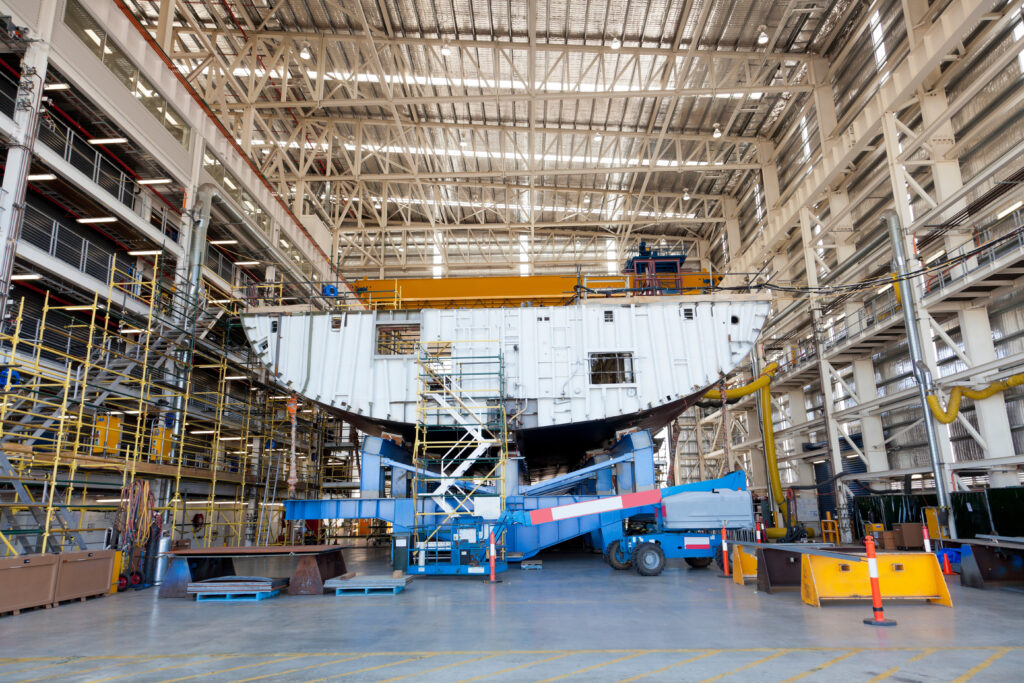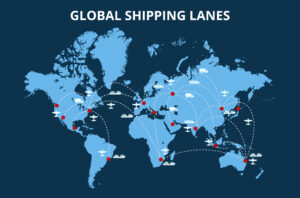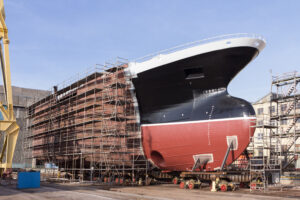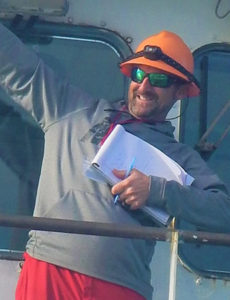- May 16, 2023
- Industry, Marine News
- Looking into the Domestic Picture
“Financial Analyst: Sometimes right, sometimes wrong. Always certain.”
-Anonymous
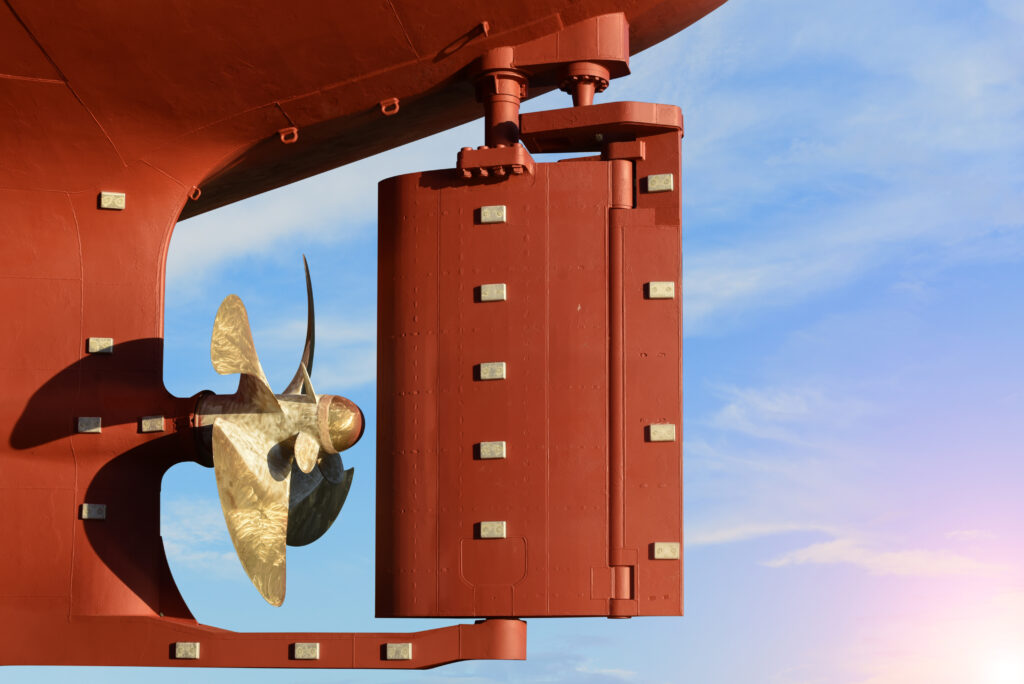
SHIPYARDS
I have been writing these blogs for two years now, analyzing the future of the marine industry. My intent is to help decision-makers address and prepare for forecasted changes. Now, I would like to shift my focus to various topics concerning domestic coastal, harbor, and inland marine operations.
I’m going to jump into the subject of shipyards, primarily around the Gulf of Mexico, and the trends we are seeing as far as assets being ordered and built. For publicly traded companies, 10-K reports are published online filled with detailed, fascinating information. The data gleaned from these reports is also often applicable to all shipyards.
Conrad Industries of Morgan City, Louisiana stands out as a shipyard capable of building a diverse portfolio of asset builds throughout their five facilities. One of the older shipyards, Conrad, started in the 1950’s and has built almost every type of floating equipment for almost all facets of the domestic marine industry. They recently completed an LNG bunker barge and are building a large quarters barge, possibly one of a series, for the Navy to use at the Newport News repair yard.
Speaking of quarters barges, I was involved with an earlier iteration of barracks barges – the APL 61 and APL 62. These were built by Gulf Coast Fabrication/Halter Marine at Pearlington, Mississippi with delivery at the end of 1997. My job as a surveyor was to approve the tow of these barges from the shipyard to Newport News. These are essentially 3- to 4-story apartment buildings built on a barge so there is substantially more volume above the waterline than below. Preparing them with the proper towing gear and a sufficiently powered and rigged ocean service tug for a winter Atlantic tow was a challenge.
Conrad’s latest 10-K report indicated trends that were also apparent at other shipyards. In 2021, 85.3% of their business was new construction which went up to 87.1% in 2022. Their repair and conversion segment 14.7% in 2021 as compared to 12.9% in 2022. This drop in repair work also appeared in other yards due to the drop of offshore activity. This is also seen by the figures that in 2021, 91.3% of customers were operating outside of the commercial sector compared to 2022’s 92.2% in the same sector. Energy related contracts were at 0% for both 2021 and 2022, while government related contracts were at 8.7% in 2021 dropping to 7.8% in 2022.
Looking at the shipyard’s contract backlog, 54.5% of future vessel builds will be commercial vessels, 0% will relate to the energy sector, and 45.5% will fulfill government contracts. Almost 50% of the backlog is comprised of new build orders for Great Lakes Dredge & Dock. The remaining orders are divided amongst 74 other customers.
Government contracts are of interest to many yards with the government disbursing funds for the military. Military contracts involve difficult bidding procedures from shipyards that must fit a template of approved infrastructure. Yards will only go through this arduous process for vessel contracts with which they have some type of experience.
All yards are subject to the same risk as most contracts are bid at a fixed price. Shipyards are dealing with the fallout from bids made back in 2018-2019 which have since been affected by the rise in steel prices, inflation in materials, and labor shortages driving up labor costs.
Another problem with fixed bids is that cost overruns often occur with construction of vessel designs with which the yard has little or no experience. With the technological changes in progress involving dual fuels and hybrids, this can be true of any shipyard. Conrad’s construction of the LNG bunker barge was reported to be at a loss. The hope is that the shipyard can now demonstrate their experience with such a build which will be attractive to future customers.
Gulf Island Fabrication is a facility that followed a different path from Conrad. They were mainly an offshore services fabrication yard that moved into shipbuilding with the melding of Leevac Shipyards and Quality Shipyards in 2009. However, with the crash of the offshore sector, Gulf Island sold its shipyard division to Bollinger which was finalized early 2023. Bollinger will now take over and complete the construction of a 40-vehicle ferry being built on a time and material basis. An ongoing dispute continues over two MPSV’s that were being built for Hornbeck. Hornbeck cancelled the contract, and a trial is scheduled for October 2023 over the reported $12.5MM in net receivables due to the yard.
Gulf Island’s future is to return to structure fabrication, industrial, offshore oil and gas, as well as prospective offshore windfarm structures on the east coast and Gulf. However, they will have to produce new contracts or other assets to allow financing as their 10-K states they will need additional cashflow.
The other Gulf Coast new construction shipyards have full orderbooks. Bollinger has been absorbing other yards including the recent purchase of VT Halter. The latter was in financial difficulty being behind schedule and over budget for their contract to build the first U.S. Coast Guard Polar Security Cutter. As has been done by many shipyards, they bid low on the first of an optional 4-vessel series. After the learning curve of a first-of-a-kind vessel, a yard hopes to at least break even on hull 2 and to profit on hulls 3 and 4. In this case, hull 1 losses made the Halter yard value drop to where it can be attractive to buyers. Bollinger has the funds and rapport with the Coast Guard having built number vessels of different classes for both them and the Navy. These included over 130 patrol boats as well as a new USN salvage tug design. Bollinger was also a bidder on the Polar Security Cutters and has a great deal of background information already in-house. In a similar project, DLS Marine has been providing project management services in Bollinger’s construction of three oceanographic research vessels funded by the National Science Foundation.
Other yards that are in on military contracts are Eastern Shipyards, Austal USA, Ingalls Shipyard and Metal Shark. Chouest North American Shipbuilding also has good contact with the Navy and has built special tugs for submarine bases, as well as tugs/supply vessels customized for charters to the military and Military Sealift Command.
Many yards are hoping for the growth of the offshore wind industry. As many as 100 Jones Act compliant field service vessels may soon be needed. Each crew transfer vessel (CTV) is a high-tech, high-speed catamaran with deluxe quarters for two dozen wind turbine technicians to live and work from for up to 14-day shifts.
The current problem is inflation. Costs for everything have risen since the first plans and projections for the wind industry were made. There are now renegotiations on cost sharing and the cost of the electricity being generated by the wind turbines. There has also been pushback from the offshore fishing industry as well as residents living in proximity to wind-related shore facilities. Most experts believe that this growth is inevitable, but the timing is in question.
Providers of service vessels are not happy to risk their funds, now often depleted, to be the first to contract for these vessels. But vessels are still being built as operators of coastal wind farms have already signed contracts to ensure they will have the equipment they need.
Platypus Marine in Port Angeles, Washington has an agreement in place to build a proven Damen design 27-meter crew transfer vessel (CTV) but there is no word if any have been ordered. The first CTVs that DLS Marine valued in the early days of North Sea wind farm activity were 20- and 22-meter boats for Siemens.
Most construction of CTVs occurs in yards near the site of the proposed wind farms. Senesco Marine will build three CTVs and Blount will build two for the operators of the Rhode Island wind site. Gladding Hearn is building an Incat Crowther design for Martha’s Vineyard. While not near the operation site, St. John’s Shipbuilding in Florida will build up to six CTVs of the European Chartwell Ambitious design to operate in Rhode Island.
More advanced than current CTV designs are wind turbine installation vessels (WTIVs) and service operations vessels (SOVs) which are designed and built specifically for the wind industry. WTIV’s are akin to the oil field large multipurpose construction vessels in size, technology, and costs. The WTIV “CHARYBDIS”, is being built at Kepple AmFELS in Brownsville, Texas at a reported cost of around $500 million. Being Jones Act compliant, it will be extremely valuable and in demand for the upper U.S. east coast construction. While foreign flag WTIV’s will be used, their use will have to be in conjunction with Jones Act compliant supply chains, which add both expense and logistical complications.
A design is in the works by a Houston company, Bleutec Industries Offshore Wind Services, for something they call Binary Marine Installation Solutions (BMIS). This idea is to create a group of simpler vessels that can work independently or together on wind construction. The group would be comprised of a pile installation vessel (PIV), wind turbine installation vessels light (WTIVL) and service operations vessels (SOV). Like the rest of the world, the marine industry is becoming awash in acronyms. MARAD in Title XI financing documents put the total cost for the PIV, WTIVL, and two SOV’s at just over $800 million.
Edison Chouest Offshore is planning to build an SOV at Tampa Shipyard for $97 million and a second one at LaShip in Houma, Louisiana. The latter will be a plug-in hybrid design at a cost of 108 million. Under legislation, offshore wind farm service vessels have been designated as “vessels of national interest,” so they will qualify for special longer term, lower interest rate loans.
SOVs are similar in size to the familiar PSV and AHTS. Like other new wind farm designs, they will have upgraded quarters and recreation areas for technical workers, advanced DP systems, and heave-compensated gangways. There have been plans to convert some existing larger PSVs into SOVs with the possibility of saving time and money. These vessels will be hybrids, with many set up for conversion to operate entirely on batteries with backup generators. An interesting side note- in the oil patch, the chartering company often provides fuel and lubes to the vessels they charter, while in a “wind patch”, the owners will have to purchase their own fuel. This will be the case until electrical fueling stations are added on site to support fully battery powered vessels.
Intelatus Global Partners, a long-time consultant to the energy and marine industry, has reported that SOV construction costs can be 40-140% greater in the U.S. than in Europe. This results in U.S. Capex costs 30-50% higher than in Europe.
With a projection of 10-20 SOV’s needed in the next 12 years, funding must be started somewhere. As lenders are asked to fund more new construction, particularly for CTVs, they will need to perform due diligence. While these assets are impressively “green” and the way of the future, owners, builders, and lenders alike still have numerous decisions to make regarding the costs involved.
-Norman Laskay
If you’d like to keep this conversation going, please email me at nlaskay@DLSmarine.com
